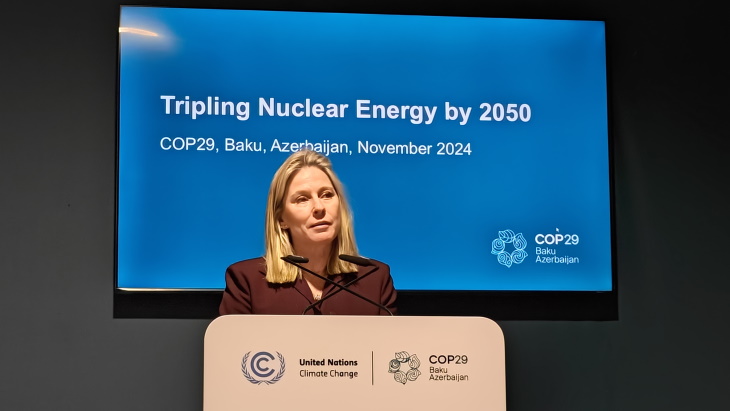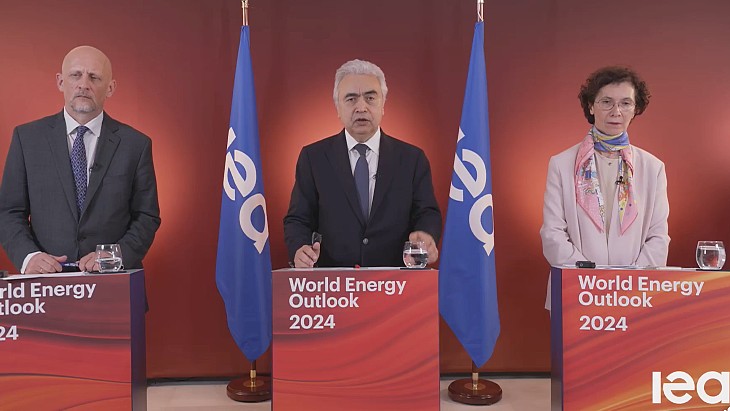IEA charts COVID's impact on electricity market
.jpg)
The report includes an assessment of 2020 trends and 2021 forecasts for electricity demand, supply, capacity and emissions - both globally and by country.
The pandemic is expected to reduce global GDP by 4.4% in 2020, significantly more than the 0.1% reduction in 2009, following the global financial crisis. For 2021, current forecasts see world economic output at about the same level as in 2019, driven by a strong recovery in emerging and developing Asia, especially China and India. Advanced economies are expected still to fall short of pre-pandemic levels.
China is forecast to be the only major economy to see higher electricity demand in 2020. However, its expected growth of around 2% is well below its recent average of 6.5%. Other big electricity consumers, including the USA, India, Europe, Japan, South Korea and Southeast Asia are all set to experience declines for the year as a whole.
Electricity generation from renewable energy sources is forecast to grow by almost 7% in 2020, squeezing conventional power sources. Coal-fired generation is set to fall by around 5%, the largest decrease on record; and gas-fired electricity generation by 2%. Overall, CO2 emissions from electricity generation are on course to fall by 5% in 2020.
Nuclear power generation is forecast to decline by around 4% in 2020, affected both by the pandemic and lower capacity availability. Less capacity was available all year as plant outages in France, Sweden, Germany, Switzerland and the USA occurred in late 2019 and early 2020. China was the main exception to this: Its nuclear output increased by about 6% thanks to new capacity coming online.
Over 8 GW of new nuclear generating capacity came online in 2020, as new units in China, India, Russia, Belarus, South Korea, Slovakia (potentially delayed to early next year) and the UAE began operating, most of this late in the year. This more than offsets the closure of units in France, Sweden and the USA, which will remove about 5 GW from service.
Around 13 GW of nuclear power capacity is scheduled to start operating in 2021. In the USA, 5.5 GW of nuclear capacity is expected to retire in 2021, while in Germany three out of the remaining six units are due to be decommissioned at the end of next year - the remaining three will follow at the end of 2022.
In advanced economies, the growth of renewables and nuclear power will continue to shrink the space remaining for fossil fuel generation, the IEA says. Natural gas is likely to be impacted more than coal as a result of an expected rise in natural gas prices. In emerging and developing economies, demand growth is forecast to outpace increases in renewables and nuclear power, leaving some room for coal and gas generation to expand. The expected net result globally is that coal-fired generation increases by around 3% in 2021, while gas-fired plants increase output by roughly 1%. This would lead to a rise in CO2 emissions from the power sector of around 2% in 2021.
Falling demand, lower fuel prices and the increase in renewable energy generation have dragged down wholesale electricity prices in 2020. The IEA’s wholesale electricity market price index, which tracks price movements in major advanced economies, shows an average price decline of 28% this year, after having already fallen by 12% in 2019.
"Electricity has a central role in today's energy world - a role that will only increase in importance as clean energy transitions accelerate," said IEA Executive Director Fatih Birol. "Based on the very latest data available, the IEA's new Electricity Market Report provides fresh insights on this critical sector. Starting next year, we will publish a new edition of the report on a half-yearly basis."

_99697.jpg)







_50521.jpg)


